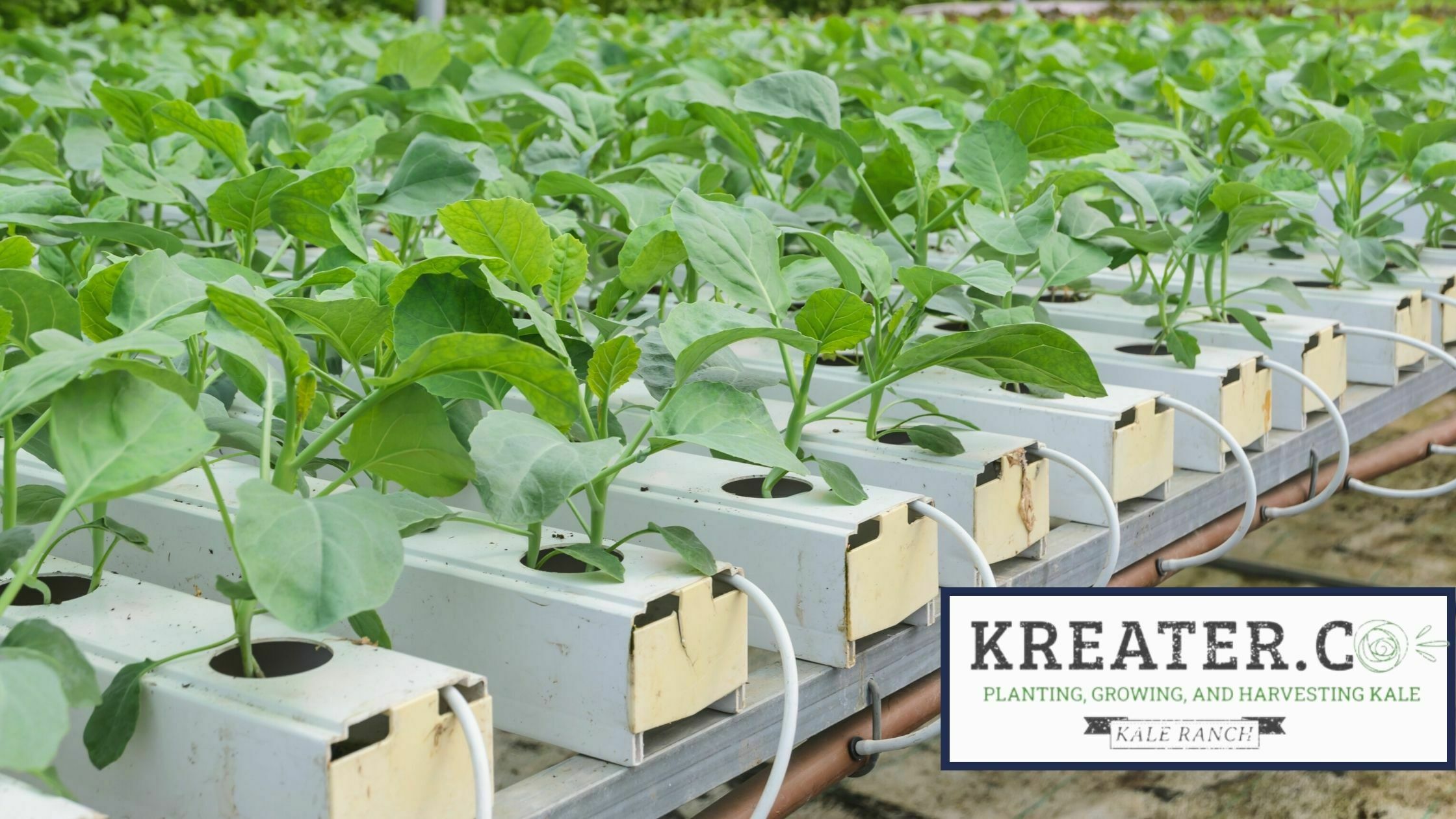If you are a fan of kale and are aware of the numerous health benefits this leafy green veggie has, then the next logical step is to grow your own; alright, so maybe not, you don’t have to grow your own, but it sure is handy to learn. And that’s exactly what we’ll be covering today, how to grow hydroponic kale.
Kale is one of those overlooked vegetables, probably everyone at home eats it, but most are not aware of how good it is for your overall health. In addition, kale is super versatile, and there is probably a kale recipe to please every palate. It is quite simple to add kale into your favorite smoothie or have it raw or baked and enjoy it as a crunchy afternoon snack.
Hydroponic Kale
Hydroponics refers to raising Kale in a greenhouse in water, and kale happens to be one of the most suitable crops for the hydroponic system.
Hydroponics have complete control over the elements, so it is an excellent system for starting seeds.
The most commonly grown kale variety in hydroponics is Curly kale or Scots kale. Kale grows fast even in an indoor hydroponic farm, and that makes it a versatile crop.
Now you can forget about getting your kale full of pesticides and have it fresh right off your own garden.
Kale Seeds
Kale can be started from seeds or cuttings known as plant starts. If starting from cuttings, it is best to reap cuttings from mature plants.
Generally, most people find that it is easier to start from seeds. In conventional gardening, kale is typically started from seed in the summer or late spring; in a controlled hydroponic Kale environment, you can start whenever.
Kale Seeds germinate best at temperatures between 60 and 75 degrees; they will germinate at lower temperatures, as low as 40 F – but much slower and with a lower germination success rate. They will also germinate at higher temperatures.
Usually, seeds got placed in growing cubes for the germination process. Many commercial growers use a Vacuum seeder to speed up the process, and you can also use pelleted seeds as they are wrapped in clay, making them easier to handle.
Others prefer to start kale seeds in cell packs with potting soil and vermiculite, but they can also be started in Oasis Cubes.
Kale seeds take around 5 to 8 days to germinate when provided proper care and management.
Hydroponic Systems Used for Growing Kale
You should know that kale plants have much larger roots, the reason why it needs more area for its growth. There are different hydroponic kale systems in which your kale plants can flourish comfortably. You can choose among the following methods.
Deep Water Culture (DWC) system:
A standard water culture system allows the roots to submerge in water. But to classify it as a deep-water culture system, the water should be at least 12 inches deep.
There are two types of DWC systems in which kale can be grown:
· Floating Rafts: This type of system is usually adopted by commercial kale growers who intend to grow more plants in their hydroponic system.
· Bucket DWC System: Mostly, hobbyists choose this type of system to grow kale in the comfort of their homes. The installation process of the Bucket system is very smooth.
Kratky Method:
The Kratky method is easy to control and manage, and it won’t consume much of your time.
In the Kratky method, the plants sit in the net pots with the help of a suitable growing medium. The plant roots have partial exposure to air while the lower part is submerged in the deep-water reservoir.
Ideal Conditions for Hydroponic Kale
Temperature: 45–85º F
EC: 1.8–3.0
pH: 6.0–7.5
- When it comes to the temperature required for the optimum and successful growth of Kale plants, you should maintain the temperature of your hydroponic farm between 45–85º F.
- Electrical Conductivity (EC) and pH range: Kale has a broader range of electrical conductivity, making it less susceptible to changes in the EC. EC range for optimum growth of the kale plant falls between 1.8 to 3.0
- The nutrient solution pH should be maintained between 6.0 to 7.5 for better growth of the plant.
Lighting Requirement: The kale crop is always considered a reliable choice for indoor hydroponic farms because it can grow well under artificial lighting conditions. Far-red light can increase the yield of the kale plant. Sometimes a combination of green and far-red light is also used.
Try to keep your kale plants spaced at least a foot and a half apart; as they grow, you may need to expand this distance to allow their broad leaves room to breathe and expand without hampering the progress of one another.
Management of Nutrients of Hydroponic Kale
During the initial phase of development, when the roots are developing, the kale plant consumes more phosphorus.
Leafy greens consume high amounts of nitrogen during their vegetative growth phase, and kale is no exception. So, if you want to see grow bigger and healthier leaves, nitrogen is an essential element.
Here are a few tips that can help you in managing the nutrients of your plants better:
Keep an eye on the EC of the nutrient solution: Frequent monitoring of EC will help you adjust the levels before things go wrong. High EC or low EC both affects the plant’s nutrient uptake capacity.
Check the temperature of the nutrient solution: It is essential to measure the temperature because high temperature drastically reduces the oxygen holding capacity of the solution. Plants absorb most of the oxygen from their roots, and it is necessary for root development.
The Kale crop will be ready for harvesting after 4 to 5 weeks from transplanting.



